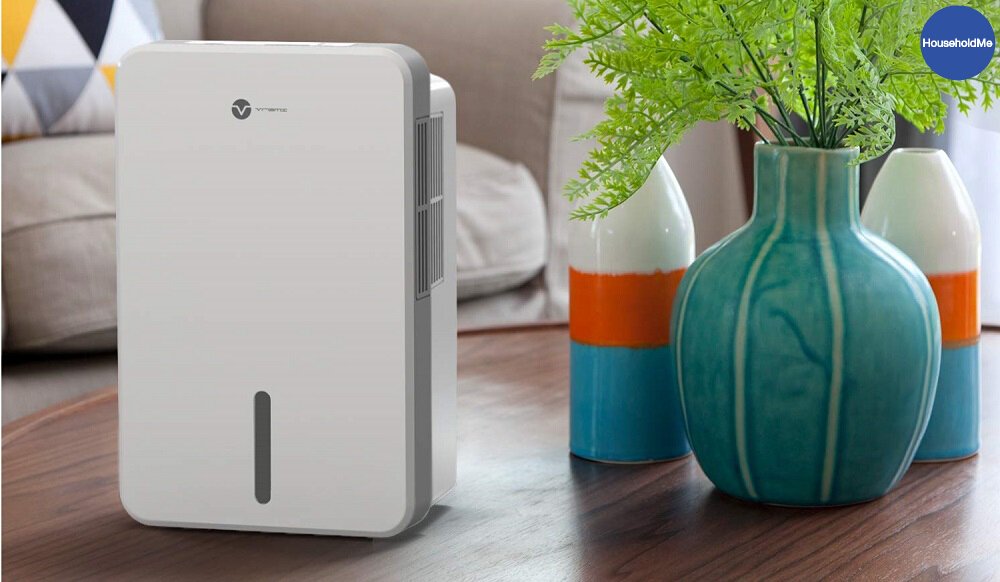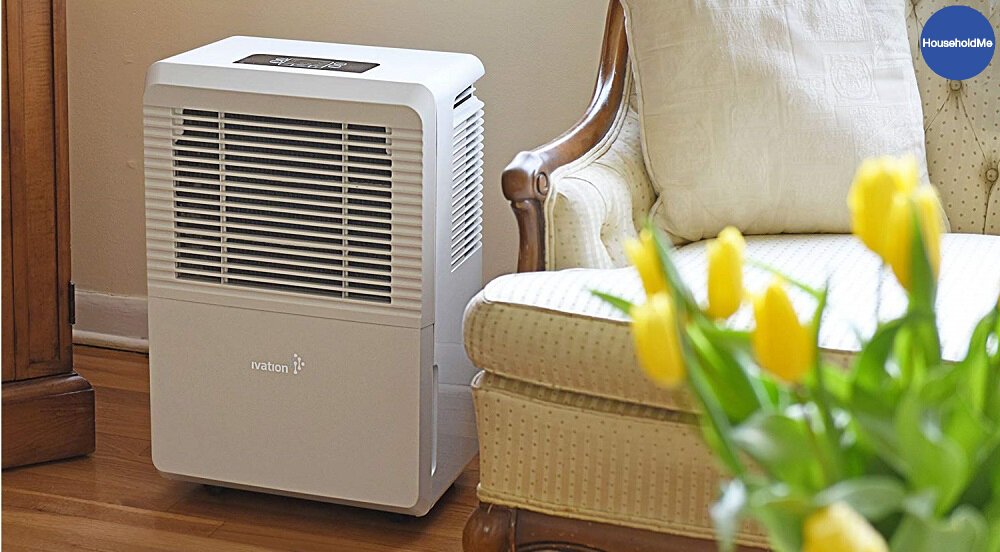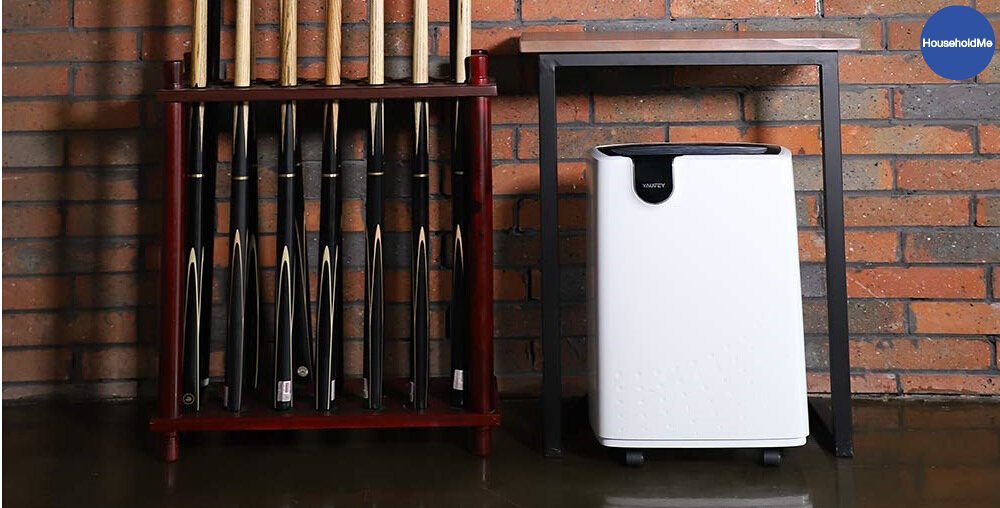Oftentimes we hear about how important it is to maintain humidity in our homes. After all, dry air can inhibit breathing and create a wide range of different health problems.
However, as dryness is a problem, too much humidity can also lead to some horrible health and home problems, such as the growth and inhalation of mold and mildew, allergy problems, and discoloration of our home’s walls.

A dehumidifier is the appliance you need if your home, or at certain rooms, are afflicted by moisture or dampness. The only problem when choosing a dehumidifier for your home is determining how large, or small, a unit you need.
Since the layout and size of your home and rooms can determine how effective a dehumidifier will be, it’ll take some time and research on your part to find the perfect model.
Types of Dehumidifiers
Before we talk about how you can find out how large a dehumidifier you need, we’ll explain briefly the various types of dehumidifiers based on how much moisture they can eliminate and in which types of rooms they’d work optimally.
1. Small-Capacity Dehumidifier
The smallest type of dehumidifier is for damp places and not exactly suitable for wet areas. A small-capacity dehumidifier is one that removes approximately up to 35 pints of water daily. They’re designed to be used in small spaces such as bathrooms, bedrooms, or enclosed kitchens.

2. Medium-Capacity Dehumidifier
This type of dehumidifier can remove up to 50 pints a day. They belong somewhere in the damp and moderately wet range in the moisture spectrum.
This is the dehumidifier you’ll need if you have a small laundry room, though they might be suitable to dehumidify an entire apartment.
3. Large-Capacity Dehumidifier
If extreme humidity is something that plagues your home during the hot months, then a large-capacity dehumidifier is definitely something to consider.
They can remove up to 70 pints of water a day, but you can also modify their settings to decrease their maximum moisture-removal capacity depending on how humid your home/room is. This dehumidifier would definitely be suitable for large basements.
4. Whole-House Dehumidifier
As you can probably assume from the name, this type of dehumidifier is designed to eliminate most of the moisture from your entire home.
There’s really no pints-per-day rate on these machines since they differ based on how big they are and how large a room they’re made to dehumidify. Needless to say, these are the most expensive type of dehumidifier.
What Size Dehumidifier Do I Need?
There are several factors that can determine the ideal humidifier capacity for your house or room. The first thing you should do is consider the relative humidity (RD) level and area of a room.

Dehumidifier Based Relative Humidity Level and Room Size
Since there’s no exact science in determining how well a certain size dehumidifier can do, we recommend that you take a look at their square footage capacity instead. There’s a general formula that you can use.
All the calculations are based on 500-square-foot rooms and larger, so you need to play it by ear if you have smaller rooms.
a. Moderately Damp Rooms
Any room or space with a relative humidity (RH) level between 50 and 60 percent, you’ll want a machine that removes around 10 pints per day.
For every additional 500 square feet of room space, you’ll need to add another 4 pints to the initial 10 pints.
b. Extremely Damp Rooms
Places that experience extreme dampness – RH level between 60 and 70 percent will require a dehumidifier that extracts at least 12 pints of water daily.
For every additional 500 square feet of space, you need to add another 5 pints on top of that.
c. Wet Rooms
Wet rooms with RH levels of between 70 and 85 percent need to be dehumidified by a machine that eliminates at least 14 pints every day. The machine will need to remove an additional 6 pints of water for every extra 500 square feet of the room’s area.
d. Extremely Wet Rooms
You need to place a dehumidifier that gets rid of 16 pints of water daily in rooms with an RH level that’s greater than 85%. Every extra 500 square feet of the room’s area needs an additional 7 pints of water removed.

Other Considerations to Make
Although the most important factors to take into account are the overall humidity level and size of your house or room, there are plenty of other variables that can come into play.
1. Number of People and Pets
Humans and animals expel waters through various crevices on their bodies.
The most basic ways we can increase the humidity level of a room, albeit very slightly, is by breathing, talking, sneezing, coughing, wheezing, and barking. In general, for every four or five people in your household, you’ll need to add another 5 pints.
2. Washer and Dryer
Your laundry room needs additional water-removing capacity since water is constantly flowing and evaporating whenever you run your washer and/or dryer. For a washer-dryer set, add another 5 pints to your total calculation.
3. Bathroom
There’s no other room that mold and bacteria love more than the bathroom. Running steamy showers, flushing the toilet, and washing your hands (hopefully) all increase the RH level of your bathroom. It’s a good idea to add another 5 or 10 pints to your calculations if you want to remove moisture from your bathroom.
4. Doors and Windows
During summertime, moisture can creep into your home via open windows and doors. Another 5 pints is needed in rooms that have doors that lead directly outside.

Related Articles
• What Size Essential Oil Diffuser Do I Need?
• What Size Humidifier Do I Need to Buy?
• What Size Air Purifier Do I Need to Buy?
Final Remarks
Finding the right dehumidifier for your home or room is simple if you know what you’re doing. Basically, you need to gauge how humid your city is, how large a room you want to dehumidify and consider other factors that contribute to an increase in humidity.
In general, we recommend getting the largest dehumidifier your budget allows. However, for certain rooms like bathrooms, bedrooms, or small basements, you can probably get by with a small- or medium-capacity dehumidifier in each of these rooms.

Our Recommended Dehumidifiers
If you have any questions or comments, please add them below in the comment section. Similarly, please let us know if you spot any mistakes or omissions. Thanks!
Last Update: 2024-04-19 | Affiliate links/Images from Amazon Product Advertising API



